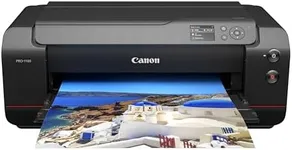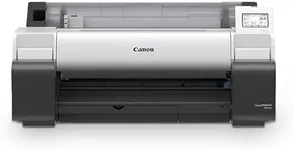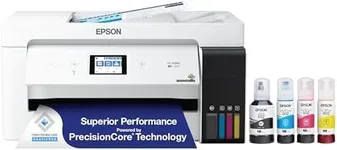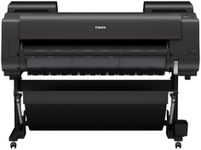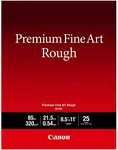Buying Guide for the Best Fine Art Printers
Choosing the right fine art printer can be a daunting task, but with the right knowledge, you can find a model that meets your needs perfectly. Fine art printers are designed to produce high-quality prints with exceptional detail and color accuracy, making them ideal for artists, photographers, and anyone who values print quality. When selecting a fine art printer, it's important to consider several key specifications to ensure you get the best results for your specific needs.Print ResolutionPrint resolution refers to the level of detail a printer can produce, measured in dots per inch (DPI). Higher DPI values mean finer detail and sharper images. For fine art printing, a resolution of at least 2400 DPI is recommended to capture intricate details and subtle color variations. If you are printing highly detailed artwork or photographs, opt for a printer with a higher DPI. For less detailed work, a lower DPI may suffice.
Color GamutColor gamut is the range of colors a printer can reproduce. A wider color gamut means the printer can produce more vibrant and accurate colors. This is crucial for fine art printing, where color accuracy is paramount. Printers with more ink cartridges (such as those with additional colors beyond the standard CMYK) typically offer a wider color gamut. If your work relies heavily on color accuracy and vibrancy, choose a printer with an extensive color gamut.
Ink TypeThe type of ink used in a printer can significantly affect the quality and longevity of your prints. Pigment-based inks are known for their durability and resistance to fading, making them ideal for fine art prints that need to last. Dye-based inks, on the other hand, can produce more vibrant colors but may not be as long-lasting. Consider the type of artwork you are printing and whether longevity or color vibrancy is more important to you when choosing between pigment and dye-based inks.
Media CompatibilityMedia compatibility refers to the types of paper and other materials a printer can handle. Fine art printers should be able to print on a variety of media, including different weights and textures of paper, canvas, and even specialty materials. Ensure the printer you choose can accommodate the media you plan to use for your artwork. If you work with a wide range of materials, look for a printer with versatile media handling capabilities.
Print SizePrint size is the maximum size of print a printer can produce. Fine art printers come in various sizes, from those that handle standard letter-sized paper to large-format printers that can produce poster-sized prints. Consider the typical size of your artwork and choose a printer that can accommodate your largest pieces. If you frequently print large artworks, a large-format printer will be necessary.
Connectivity OptionsConnectivity options determine how you can connect your printer to your computer or other devices. Common options include USB, Ethernet, and wireless connections. Wireless connectivity can be particularly convenient, allowing you to print from multiple devices without the need for cables. Consider your workflow and how you prefer to connect your devices when choosing a printer with the appropriate connectivity options.
Print SpeedPrint speed refers to how quickly a printer can produce prints, usually measured in pages per minute (PPM). While print speed is less critical for fine art printing compared to other types of printing, it can still be a factor if you need to produce multiple prints in a short amount of time. If you often print in bulk or have tight deadlines, look for a printer with a higher print speed. For occasional or single prints, speed may be less of a concern.





